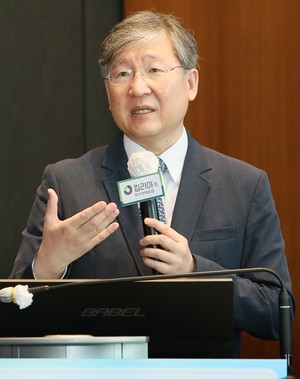“Kimria’s permission gave us the homework to create a virtuous cycle for self-development of high-tech medicines such as CAR-T treatments in the short term, and social consensus on salaries in the short term. Now that we have the homework, it is wise to do so. Unraveling is the way we should go.”
Professor Kang Hyung-jin of the Department of Pediatrics and Oncology, Department of Pediatrics at Seoul National University Hospital, spoke about the significance of introducing the first CAR-T treatment at a press conference to commemorate the approval of’Kimria’ held by Novartis on the 23rd.

‘Kimria’ (ingredient name Tisagenrexel), which was recently developed by Novartis, is approved by the Ministry of Food and Drug Safety as the first new drug applied with the’Advanced Renewable Bio Act’, and it is possible to use customized immunotherapy options for one person even for domestic blood cancer patients. Became.
However, the treatment cost of’Kimria’, which is expected to exceed 500 million won, acts as a wall of reality that patients cannot even try without applying salaries, and it is thrown as a homework burdened by the health authorities who manage their lives with limited health benefits. to be.

On this day, Professor Hyung-jin Kang explained, “With the development of CAR-T therapy, the treatment of blood cancer has entered a completely different stage.” It is the innovation that has made it possible to expect a second life in relapsed and refractory patients whose life expectancy is only a few months left because there are no more treatment options.
Professor Kang said, “Like looking at the treatment that used mercury for the treatment of syphilis in the past, the cytotoxic anticancer drugs and radiation treatment currently used as chemotherapy will be like pouring poison into the patient if viewed from a future point of view.” In the next few decades, the 3rd and 4th generation treatments that improved the shortcomings of the 1st and 2nd generation CAR-T treatments such as Kimlia will gradually go back to the forefront of blood cancer treatment and be caught as standard treatments.”
Professor Kang said, “This is just the beginning, and today Kimlia has given us short- and long-term challenges. We have to think about how we can solve this expensive cost problem and develop such an innovative treatment in-house.” Emphasized.
‘Kimria’ is a personalized treatment that uses individual immune cells (T cells) collected from patients to express a gene that recognizes cancer cells and injects them back into the patient after culturing, and is highly specialized in manufacturing and treatment processes. This is because the cost is set at a different level than before by entailing the process that has been done.
Professor Kang said, “Currently, the indications for Kimlia are that the number of domestic target patients is 40-50 per year in childhood cancer, and more lymphomas are expected. The problem is that this is the beginning.” “The number of target patients will increase as we move to the advanced stage of treatment, but how can health insurance finance this, even taking into account that the price is going down a bit?” he asked.
“The cost of treatment for Kimlia is expected to exceed 500 million won, including pre-treatment and hospitalization. However, medical inequality is already realizing due to economic power, as it is impossible for individual patients without insurance benefits.” As the health care finance is the people’s money, it is a level that requires a national consensus, and now is the time to publicize the issue of paying for the use of expensive treatments and find a solution.”
In addition, Professor Kang emphasized that it is important to solve the salary problem right away, but in the long run, it is important to create an environment in which high-tech medicines such as’Kimria’ can be developed and produced in-house.
Professor Kang said, “Even in the case of Kimlia, a university in the United States developed a treatment and Novartis succeeded in commercializing it. In the case of foreign countries, patients with support and regulations for clinical trials led by research institutes such as universities have been established. “They can access new treatments through research, and these results form a virtuous cycle that leads to the development of new drugs by companies.”
However, he said, “Korea is subject to strict regulations on the level of development of new drugs by companies even in clinical trials for research purposes.” It is an environment in which research is impossible, so it is necessary to deregulate research.”
He added, “Fortunately, the advanced regenerative bio method in Korea will be reorganized, and clinical trial registration will begin in April-May,” he said. “I hope that the advanced regenerative bio method will be the beginning of a breakthrough in the domestic bio field.”
